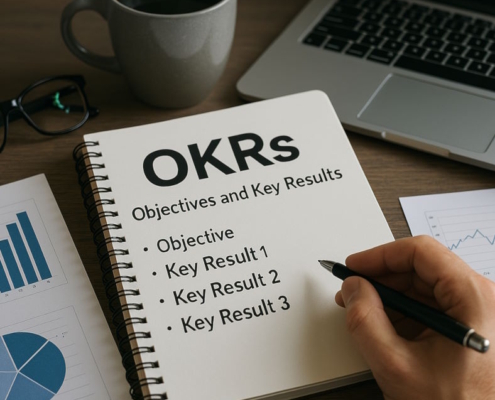Assembly Bill 1221
The new law, Assembly Bill 1221, which goes into effect on July 1, 2022, will impact all businesses that serve alcohol by requiring said business to provide educational training to all its workers. The training program is composed of two parts: a course 3-4 hours in length and an open-book exam. The exam portion of the training requires a 70% passing grade. Failure to pass the exam will necessitate repetition of the course.
The Responsible Beverage Service Training Act delineates the content of the course, which is laid out in the California Code of Regulations Title 4, Sections 162-166. The first curriculum requirement, detailed in Section 162, concerns the social impact of alcohol. This section addresses:
- Alcohol-related crimes, such as DUI and assault
- The increased burden on first responders
- The impact on a community’s quality of life, including issues such as public indecency and noise levels
- Effects on public health, i.e., alcoholism and related diseases
The second curriculum requirement, detailed in Section 163, concerns the impact of alcohol on the body. This section addresses:
- Human physiology, including alcohol’s path through the body, the body’s method of processing alcohol, myths regarding sobering up, and alcohol’s effect on the body
- Alcohol-impaired driving, including impaired judgment and coordination
- Blood Alcohol Concentration (BAC) levels
- Potential signs of intoxication, including physical reactions, physical appearance, lowering of inhibitions, and loss of judgment
- Factors affecting the severity of intoxication, including the manner of alcohol consumption, binge drinking, personal tolerance, interactions with other drugs, and altitude
The third curriculum requirement, detailed in Section 163, concerns state laws and regulations regarding alcoholic beverage control. This section addresses:
- Categories of crimes in California, including infractions, misdemeanors, and felonies
- Types of liability for licensees, their employees, and their contractors, including criminal, administrative, and civil liability
- Laws related to the service of alcohol for consumption
- Regulation of alcoholic beverages by state and local law enforcement agencies
- Role of law enforcement officers
- Exceptions within local jurisdictions
The Responsible Beverage Service Training Act does not only apply to those employees who directly deliver the alcohol to the customer. All workers at an establishment will be required to take the training course. These individuals include managers, employees who check ID, servers who take alcoholic beverage orders, employees who make alcoholic beverages, and servers who deliver alcoholic beverages to patrons.
The law will affect approximately 56,000 businesses in California, all of which must comply with the mandate by August 31 of this year. The major complication this presents to the service industry is the added bureaucratic strain of ensuring that all workers, veteran and new, successfully complete training. The current training process includes the following steps:
- The worker must register with the Alcoholic Beverage Control Department (ABC) and pay a $3 fee in exchange for a 9-digit ID
- The business must pay a third-party company for online or in-person training
- The worker will then have 30 days and 3 attempts to pass the exam
In their effort to streamline the compliance process, the ABC has approved approximately 45 third-party training providers. Naturally, getting hundreds of thousands of workers registered and trained in a timely manner may create a bureaucratic bottleneck in the short-term. The ABC, however, has stressed that the goal of the law is not to penalize or inconvenience establishments, but to support education. It is, in short, an attempt to increase community safety. There will not, the ABC has implied, be a crackdown on businesses struggling to comply with the mandate within the planned timeframe.
That said, besides bureaucratic challenges, when it comes to enforcement there are concerns of a practical nature. A worker may understand the theories discussed in training but applying them in real life could present difficulties. For instance, it might be hard for a server to tactfully decline a potentially inebriated customer without concrete evidence of their condition. There is also the possibility that a server might misdiagnose a patron as intoxicated, fomenting a conflict. Though the RBSTA arms workers with information, enforcement of the law relies heavily on individual perception. One worker’s interpretation of the law may differ from his coworker’s, raising the issue of inconsistent enforcement.
Importantly, there is the question as to whether the Responsible Beverage Service Training Act imposes greater liability for the establishment that serves alcoholic beverages to an injured party. What would happen if a bar or server provides alcohol to an inebriated individual who thereafter causes injury or death to another person? Under the RBSTA, are establishments put at greater risk of litigation?
The answer is that the RBSTA does not appear to create a new duty or greater liability to the injured party. According to California Civil Code 1714, an individual is responsible for his or her own actions and any injury he or she causes to another. Furthermore, no social host, such as a bar or restaurant, may be held liable for damages or injury to that person or a third party. Pursuant to the Code, establishments enjoy protection from legal action.
While California Civil Code 1714 concerns liability in the case of damage or injury caused by intoxication, the Responsible Beverage Service Training Act was passed for the purpose of education. The law instructs establishments on the dangers of serving excessive alcohol and how to identify an intoxicated patron. The RBSTA was enacted not as a penalty, but as a proactive measure. It is, in essence, a codified curriculum meant to instill a sense of civic responsibility toward one’s community. Therefore, the RBSTA has effected no change regarding the issue of liability as previously established in the Civil Code.
If it attains a high rate of compliance, the Responsible Beverage Service Training Act will curb alcohol-related damage, injury, and death in California communities. Legally, establishments will enjoy the same immunity as before, pursuant to Civil Code 1714. Owners and managers may rest assured that by following the protocol of RBSTA, they are helping to protect their neighbors and to improve the quality of their communities.





















